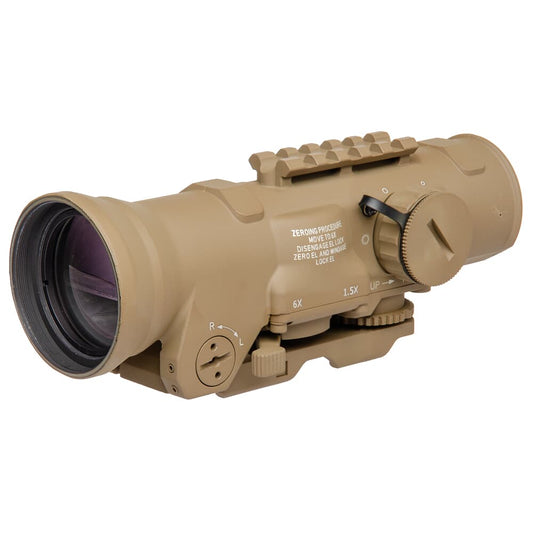

Engineered for versatility, the Elcan SpecterDR 1.5x/6x 7.62 BDC FDE Scope offers seamless magnification transitions between 1.5x and 6x, catering to precision shooters in various scenarios. Its robust design features a Cerakote finish, which not only enhances durability but also minimizes infrared detection, making it an ideal choice for military and law enforcement applications. The practical functionality ensures that this scope meets the rigorous demands of tactical environments.
Featuring an illumination function, the reticle remains visible even in low-light conditions, ensuring clear target acquisition at any time of day. Additionally, the generous field of view at both magnification levels enhances situational awareness, critical for tactical engagements. An integrated picatinny rail allows for easy accessory attachment, making the SpecterDR a flexible optics solution for diverse shooting needs.
Features:
- CERAKOTE FINISH for reduced IR detection, enhancing stealth in the field.
- INTEGRATED PICATINNY RAIL allows for versatile accessory attachment, increasing adaptability.
- MAGNIFICATION THROW LEVER enables quick switching between 1.5x and 6x, perfect for changing engagements.
- ILLUMINATION FUNCTION illuminates crosshairs or center dot, offering clarity in low-light situations.
- OPTIMIZED OPTICAL PATH ensures consistent eye relief at both magnifications, enhancing comfort during use.
- GENEROUS FIELD OF VIEW maintains situational awareness at all times, crucial for tactical applications.
- DURABLE CONSTRUCTION built to withstand the rigors of military and law enforcement use.
- LIGHTWEIGHT DESIGN at just 24.8 ounces, ensuring mobility without compromising performance.
Technical Specifications Table
| SKU | DFOV6-T265-C20 |
| UPC | 666595000872 |
| Magnification Range | 1.5x/6x |
| Scope Finish | FDE |
| Scope Length | 7.2" |
| Eye Relief | 70mm |
| Field of View | 21 feet @ 100 yards (6x), 86 feet @ 100 yards (1.5x) |
| Scope Weight | 24.8 ounces |
What’s in the Box?
- Elcan SpecterDR 1.5x/6x Scope
- Flip Covers
- Anti-Reflection Device (ARD)
- A.R.M.S. Levers
Customer Reviews
"The Elcan SpecterDR is a game-changer for tactical operations. The clarity and ease of use are unmatched!"
"Switching between magnifications is incredibly smooth. It's perfect for my needs!"
"Lightweight yet durable, this scope has exceeded my expectations."
FAQ
How does the illumination feature work?
The illumination function allows you to illuminate the entire reticle or just the center dot, depending on your shooting conditions. This helps improve target acquisition in various lighting scenarios.
Can this scope handle the recoil of high-caliber rifles?
Yes, the Elcan SpecterDR is designed for durability and can withstand the recoil associated with high-caliber rifles, making it suitable for a range of firearm setups.
Similar Models
Looking for more versatile optics? Explore our complete collection, including the Elcan SpecterDR 1x/4x for a lightweight option and the Elcan SpecterDR 3x/9x for extended range capabilities. Discover the right scope tailored to your tactical needs!
You May Also Like
Here’s some of our most similar products people are buying. Click to discover trending style.






